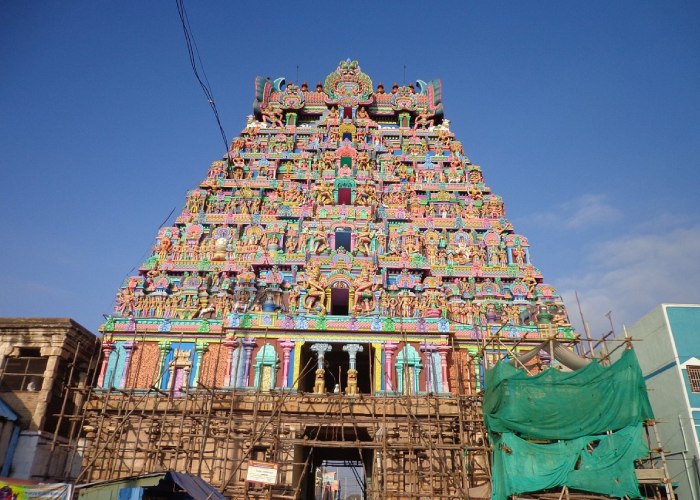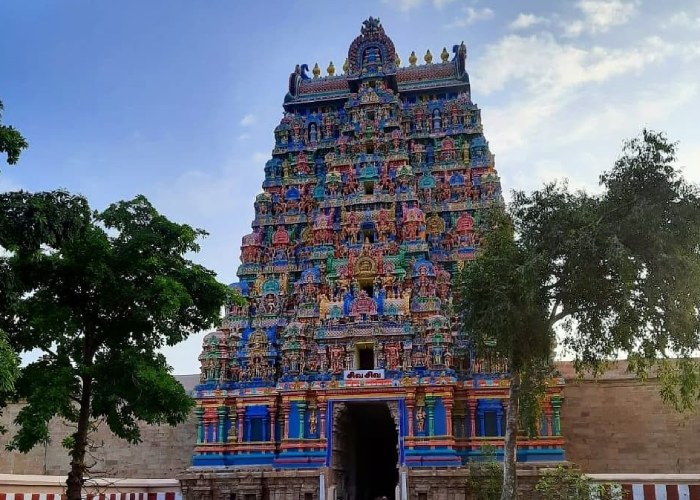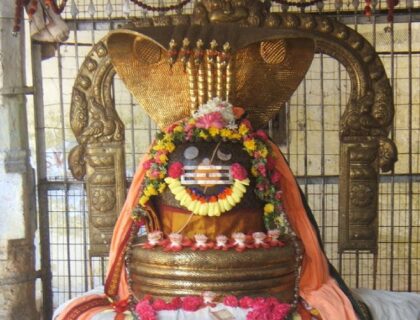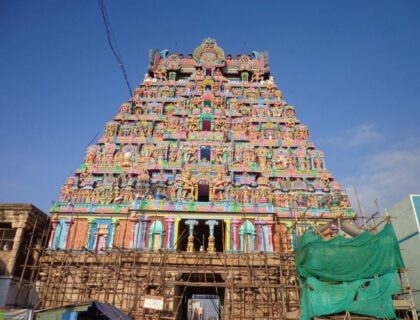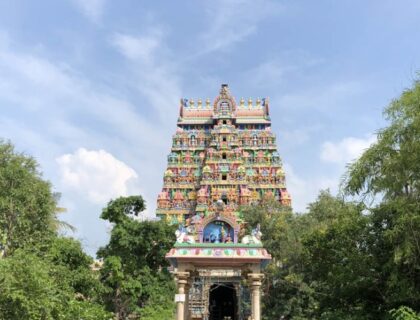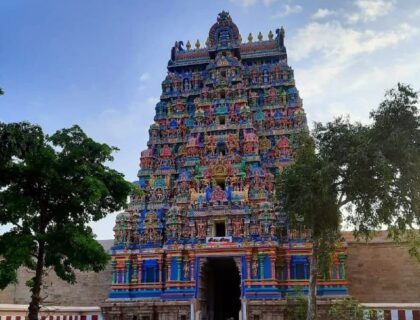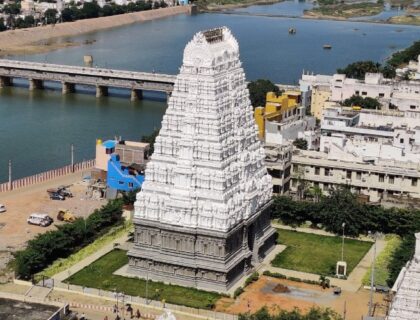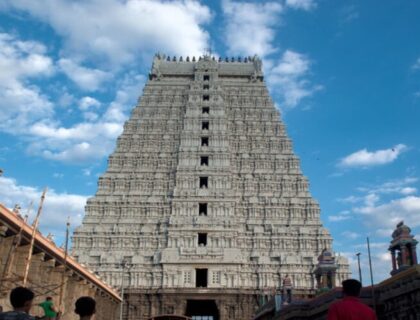Jambukeshwarar Temple – Thiruvanaikaval
The Jambukeshwarar Temple or Thiruvanaikaval is Pancha Bhoota Stalam Temple located in the Tiruchirapalli (Trichy) district of the Indian state of Tamil Nadu. Thiruvanaikal is one of Tamil Nadu’s five most important Shiva Temples (Pancha Bhoota Stalam), representing the five great elements of the Mahbhta. This temple is a representation of the water element, or neer in Tamil.
It is one of the 275 Paadal Petra Sthalams, where all four most revered Nayanars (Saivite Saints) have sung glories of the deity in this temple. The Jambukeswara sanctum has an underground water stream that, despite being full of water, never runs dry. The temple contains inscriptions from the Chola era.
Story Behind Jambukeshwarar Temple
Parvati once mocked Shiva’s prayer for the sake of the world. Shiva told her to do penance on the earth from Kailasam, where Shiva resides, in order to exact punishment for her actions. Parvathi took the form of Akilandeswari and went to the Jambu forest (Thiruvanaikoil) to fulfil Shiva’s wish.
She began her worship under the Venn Naaval tree, also known as the Venn Naaval tree on top of the saint Jambu, by making a lingam out of water from the Cauvery River, also known as the Ponni River. Appu Lingam is the name given to the lingam, also known as the Water Lingam. Finally, Shiva gave Akilandeswari darshan and instructed her in Siva Gnana. Shiva, who was facing west, gave Akilandeswari upadesa, or lessons.
There were two Siva Ganas in Kailash, known as “Malyavan” and “Pushpadanta.” Despite the fact that they are Siva Ganas, they are constantly at odds with one another. Malyavan cursed Pushpadanta to become an elephant on Earth in one battle, while Malyavan cursed Pushpadanta to become a spider on Earth in another. When the elephant and the spider arrived in Jambukeswaram, they began to pray to Siva. The elephant consistently gathered water from the Cauvery Stream and bathed at the lingam beneath the Jambu tree (Eugenia jambolana, the rose-apple tree).
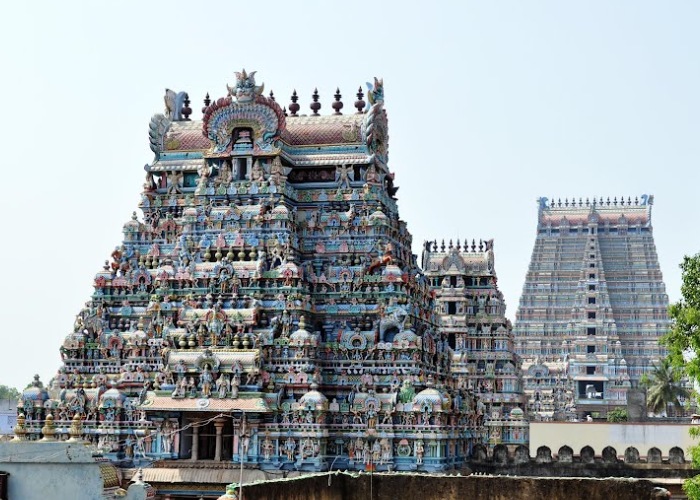
To keep dry leaves from falling on the lingam and direct sunlight from shining on it, the bug processed a web around it. When the elephant first saw the web, he thought it was dust on the lingam. The elephant ripped them up and poured water on the lingam on a daily basis. The spider became enraged and crawled into the elephant’s trunk, biting the elephant to death before killing itself. Jambukeswara, Siva, was moved by the two people’s devotion and lifted the curse.
Because an elephant worshipped Shiva here, this location became known as Thiru Aanai Kaa (thiru means sacred, aanai means elephant and kaa (kaadu) means forest). Later the name ‘Thiruaanaikaa’ became ‘Thiruvanaikaval’ and ‘Thiruvanaikoil’.
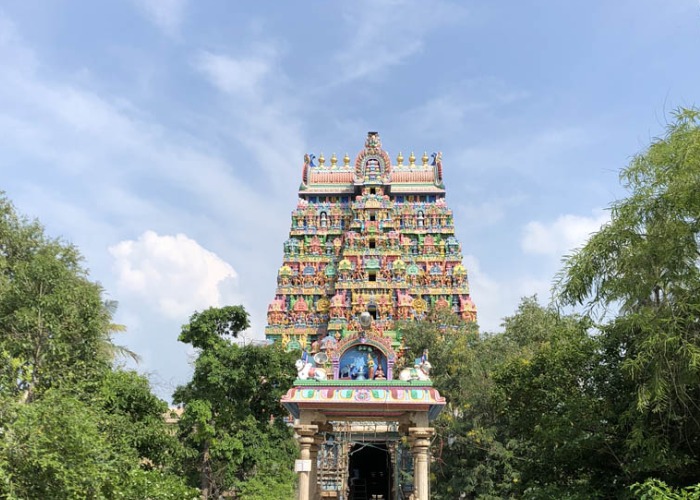
As a result of committing a sin by killing the elephant, the spider was reborn as King Kochengot Chola (kotchengannan cholan meaning red-eyed king) and built 70 temples, one of which is this one. Nalayira Divya Prabandham mentions the Chola building seventy temples in addition to this temple. Because of his previous birth’s animosity with elephants, he built the Siva Sannathi (sanctorum) so that not even a small elephant could enter. The entrance to Jambukeswara’s sanctorum is only 4 feet high and 2.5 feet wide.
History of Jambukeshwarar Temple
This massive temple, which has been around since at least 600 AD, is one of India’s oldest. Tamil poetry from the second century AD mentions Kama kottam and Kumara kottam (the present-day Kamakashi Amman and Subramanya temples). The Pallavas were the first to build the temple. Kachiyapper, a Vedantist, was a temple priest. The current structure was demolished at the time, and it was rebuilt by subsequent Chola Kings. The saint Adi Sankara of the tenth century transformed Kanchipuram and expanded this temple, the Kamakshi Amman temple, and the Varadaraja Perumal Temple with the help of local rulers.
During the 15th century, the Vijayanagar kings also made a lot of contributions to the Jambukeshwarar Temple. Later, Vallal Pachiyappa Mudaliar used to regularly travel from Chennai to Kanchipuram to worship in this temple. He spent a lot of money on the temple renovation while the British were in charge.
The Jambukeshwarar Temple pillar shows Pachiyappa Mudaliar seated on horseback. Pachiappa Mudaliar later built a temple in Chennai with the same name as the original, Ekambareswarar, to save time travelling to Kanchipuram. According to the Archaeological Survey of India report from 1905 to 1906, Nattukottai Chettiar carried out extensive renovations in the temple.
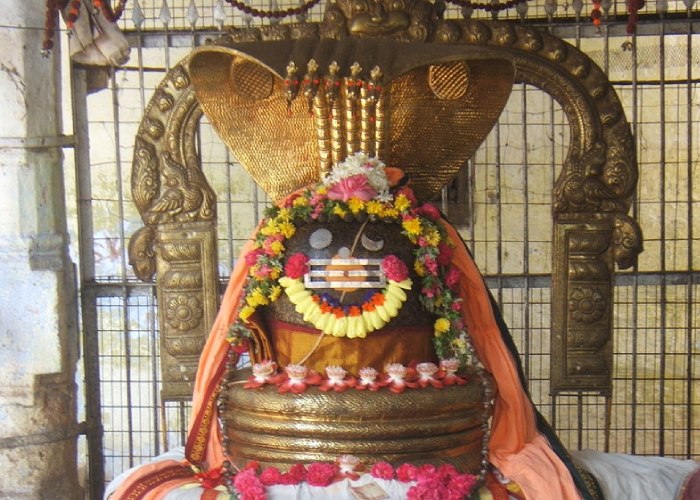
The spider’s subsequent birth as King Kochengot Chola (kotchengannan cholan, which translates to “red-eyed king”) resulted from his act of killing the elephant. The account of the Chola building seventy temples in addition to this temple is mentioned in Nalayira Divya Prabandham. In light of his animosity toward the elephant from his previous birth, he constructed the Siva Sannathi (sanctorum) such that not even a small elephant could enter. The entry on the sanctorum of Jambukeswara is just 4 feet high and 2.5 feet wide.
The story behind the ruler’s red eyes was that when he was in his mother’s womb, the castle soothsayer predicted a sacred opportunity to bring forth empower the child’s prosperity. The queen gave birth ahead of the astrologer’s predicted time. As a result, the queen instructed the servant to hang her upside down until the time came for her to bear a wise and virtuous son capable of rightfully leading the kingdom. The baby’s eyes turned red as he waited in the womb. When he became king, he built the temple for God Shiva and Goddess Akilandeswari. It was originally known as Aanaikka, which means “elephant-protected,” but it was later renamed Thiruvanaikovil.
Architecture of Jambukeshwarar Temple
The massive outer wall that surrounds the fifth precinct, the Vibudi Prakara, is over a mile long, two feet thick, and more than 25 feet high. The fourth precinct hall has 796 pillars and measures 2436 feet by 1493 feet. It also includes a small tank fed by perpetual springs. The third enclosure measures 745 feet by 197 feet and is surrounded by a 30-foot high wall.
This area includes a coconut thoppu, two gopurams (gateway towers) measuring 73 and 100 feet in height, and a small water tank. The second enclosure is 306 feet by 197 feet in size, with a 65-foot-tall gopuram and several small shrines. The sanctum is in the innermost enclosure, which is 126 feet by 123 feet.

The sanctum sanctorum is a square structure, seen as freely arranged at the deepest nook’s focal point. A vimana can be found on the roof of the sanctum. The structure is separated from the innermost enclosure’s circumambulatory path by a shallow moat that is open on three sides. The sthala-vriksham, or holy tree, in this location is the White Jambuka, which grows along the southeastern wall of the sanctum sanctorum. To protect the tree’s trunk, a walled structure surrounds it.
The Mukha Mantapa, a large closed hall with four pillars and a bronze Nandi idol, runs through the sanctum on the western side, where the deity can be seen. The main entrance to the Mukha Mantapa is a large, ornate, silver-gilded western door. There are two extra passages to the Mukha Mantapa on the southern and north Eastern sides also.
Facts about Jambukeshwarar Temple
- The five Shiva temples known as Pancha Bhoota Stalam reflect the manifestation of the five primary elements of nature: space, air, fire, water, and earth.
- Shiva is said to have manifested himself in the form of water in the Jambukeshwarar Temple (Appu Lingam)
- The Jambukeshwarar Temple represents the water element. Even though the authorities regularly pump water out of it, the underground stream in its sanctum is always full.
- At noon, the priest dresses up as a woman and performs a pooja for Jambukeswara and “Go Maatha,” which translates to “cow,” because Goddess Akilandeswari worshipped Shiva in this temple. This pooja is extremely popular, and many devotees attend it every day. For the pooja, a special type of dark cow known as Karum Pasu is used.
- Furthermore, the temple’s idols are opposite one another. These are Upadesa Sthalam temples. Unlike other Shiva temples, this temple does not have the Thiru Kalyanam (marriage) of Shiva and Parvathi because the Devi was a student and Jambukeswara was a Guru (teacher).
- The Jambukeshwarar Temple forms one of the venues for the annual Natyanjali.
Famous Festivals In Jambukeshwarar Temple
- Panguni Brahmmotsavam in March-April and Aadi Pooram in July-August are the famous festivals of the temple.
- Also, Purattasi is the Navarathiri festival taking place elaborately over 10 days.
- The temple additionally commends the Theppam (Float) celebration on Thai Poosam, in the Tamil month of Thai. Fridays are designated for special poojas during the Thai month. Vasantha Urchavam is praised for ten days in the Tamil month of Vaikasi. Other festivals that are observed in Jambukeshwarar Temple include Karthigai Deepam, Margazhi Thiruvathirai Utsavam, and Pancha Prakara.
How To reach Jambukeshwarar Temple
By Air: The nearest airport is Trichy (Tiruchirapalli), which is 15 kilometres away. You can reach here by local transport.
By Rail: The nearest railway station is Trichy Junction, which is 8 kilometres from the temple.
By Road: The temple is 8 kilometres from Trichy’s central bus station and 3 km from Chathiram bus station. Thiruvanaikaval is served by both government and private bus services.
Also Read – Arunachalesvara Temple
Support Us
If our content helps you even 1% in gaining information about the temple, please support us by contributing any amount, our UPI ID is - q417999792@ybl Or pay using QR CODE >>> Click Now
Location
Facilities
- Drinking Water
- Pooja Item Shops
- Prasad Shops
- Restaurants Nearby
- Resting Room

